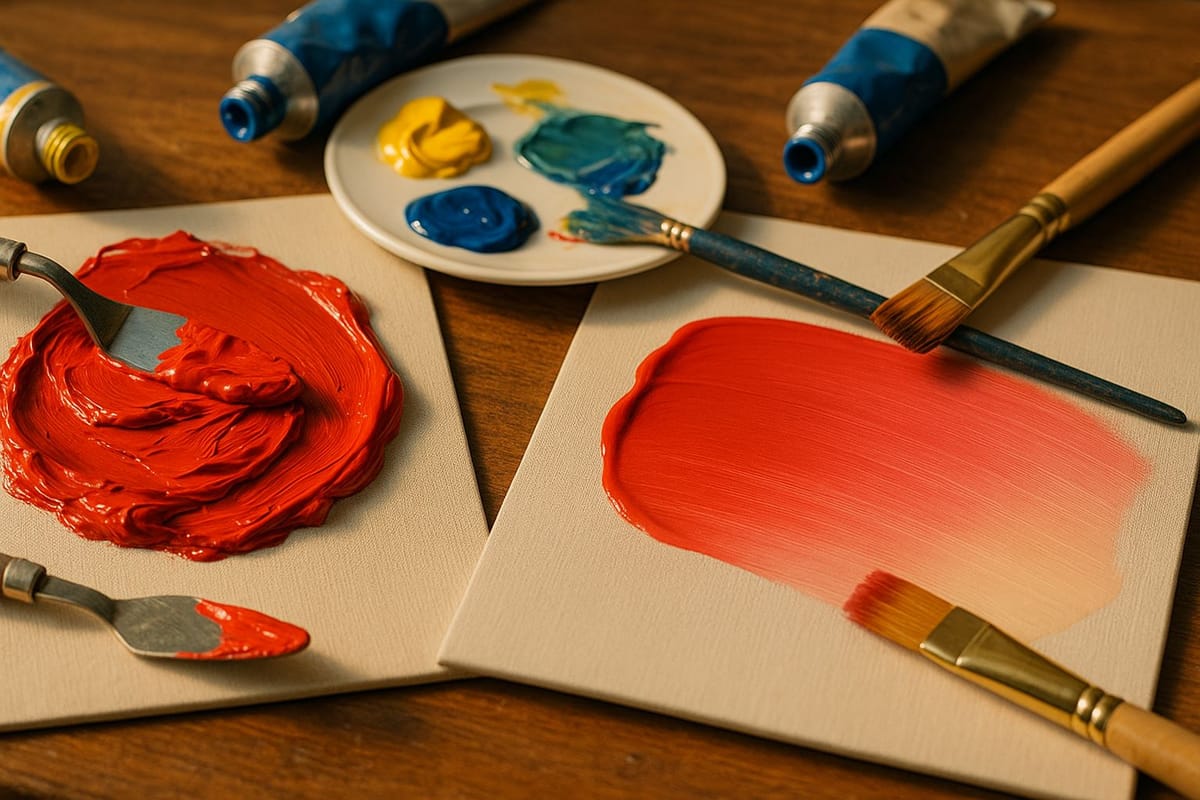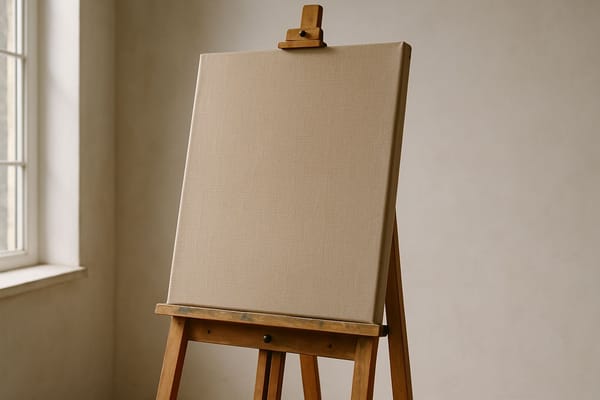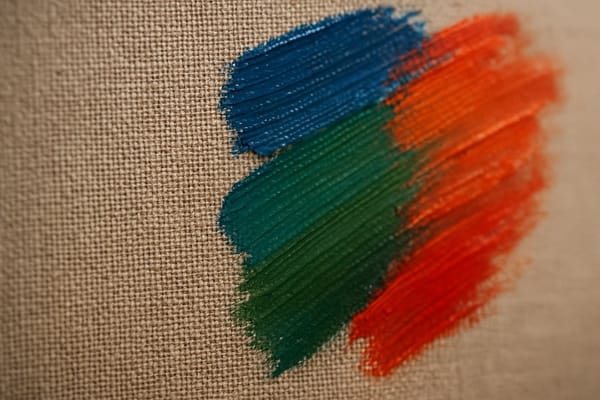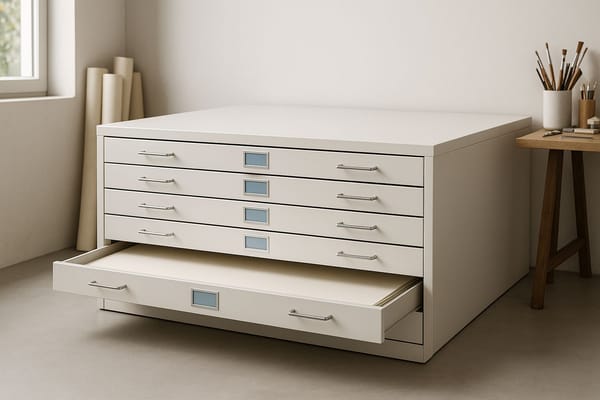Heavy Body vs Soft Body Acrylic Paint: How to Pick the Right Type for Your Painting Style
Not sure which acrylic to use? Compare heavy and soft body paints to find the perfect texture and control for your next project.

Choosing between heavy body vs soft body acrylic paint depends on how viscosity supports stroke shape, edge precision, glazing control, and surface build, not on brand labels or trends. Acrylic "body" describes thickness and flow, which govern peak retention, leveling, and how light plays across texture. The decision affects color mixing, masking accuracy, and drying behavior across canvases and panels. Once those handling differences are clear, your process gains predictability from sketch to varnish, and results remain consistent across projects.
What Does “Body” Mean In Acrylic Paints?
Body viscosity controls peak height, leveling smoothness, and edge definition, which changes stroke topography, film uniformity, and masking reliability across typical grounds.
Peak Retention And Stroke Topography
Heavy paints hold knife ridges and bristle architecture, preserving sculptural intent. Soft paints relax into lower profiles and read as smoother fields. In heavy body acrylic paint vs soft body comparisons, the difference becomes obvious under raking light: peaks from heavy formulations catch highlights, while soft films present subtler transitions. When surface relief is central to composition, structural height from heavy formulas keeps visual energy intact.
Leveling, Film Uniformity, And Glazing
Self-leveling character defines soft bodies. Thin coats settle into even skins that support chromatic glazing and flat color passages. In between heavy body vs soft body acrylic paint, heavy bodies keep deliberate micro-texture, which can be tinted later without collapsing relief. In soft body vs heavy body acrylic paint scenarios focused on optical layering, the smoother film of soft options often yields cleaner stacks and clearer temperature shifts.
How Should You Decide Between Heavy And Soft Body Paints?
Technique and finish requirements set the choice: heavy body acrylic paints favor sculptural gesture and assertive texture; soft body favors glazing clarity, controlled pours, and precision masking.
Technique-To-Body Pairings
Impasto, sgraffito, alla prima massing, and knife-led abstraction align naturally with heavy viscosity between heavy body and soft body acrylic paint. Flat fields, delicate glazes, gradients, and fine type align with soft handling. Mixed-method canvases benefit from both within a single workflow, assigning each body to the stages where its strengths dominate.
First-Surface A/B Checklist
Ground preparation changes everything. Smooth, finely sanded gesso amplifies soft leveling and edge sharpness; toothier canvas enhances the drag and ridge retention prized in heavy work. A brief A/B on your usual substrate reveals drag, edge clarity, and post-stroke leveling in minutes and makes heavy body vs soft body acrylic paint decisions evidence-based.
Budget And Workflow Efficiency
Inventory mirrors dominant marks. Stock the body that solves most passages, then keep the other for gaps. This approach keeps costs in check while preserving flexibility when heavy body acrylic paint vs soft body trade-offs appear mid-project.
When Is Heavy Body The Better Choice?
Heavy body excels when sculptural texture, bold gesture, and crisp knife planes must remain intact; peaks hold light, strokes stay architectural, and broken color remains readable after curing.
Tools That Amplify Heavy Body
- Steel knives and silicone wedges for stable peaks and planar cuts
- Firm bristle or stiff synthetics for decisive stroke geometry
- Texture combs for repeatable grooves and striations
Media for Peak Retention And Open Time
- Gel mediums to build height without sacrificing pigment strength
- Slow-dry/retarder additives to extend blend windows on textured passages
Surfaces That Support Sculptural Passages
- Primed hardboard or cradled panels for maximum stability under knife pressure
- Tight, well-gessoed canvas to record gesture without excessive bounce
- Rigid composites are used when heavy loading and crisp edges are required
In heavy body vs soft body acrylic paint tests focused on impasto, heavy consistently preserves ridge height. Color mixing on the palette also feels closer to oils, encouraging discrete mixtures and controlled transitions. When the brief demands physical relief as a design element, heavy-body acrylic paint versus soft-body acrylic becomes a straightforward call in favor of structural integrity.
When Is Soft Body The Better Choice Between Heavy Body vs Soft Body Acrylic Paint?
Soft body acrylics delivers smooth films, crisp edges, and repeatable glazes; predictable flow, reduced drag, and even pours support design-forward, detail-oriented, and high-layer workloads.
Tools For Precision And Flow
- Soft synthetic rounds and liners for hairline accuracy
- Airbrush systems for uniform fields and controlled fades
- Squeegees and stencils for sharp, repeatable shapes
Media for Glazes And Pours
- It can be applied on a fluid medium to extend transparency while maintaining binder strength
- Pouring medium for leveling, crater resistance, and durable films
Surfaces For Edge Accuracy
- Smooth, finely sanded gesso panels for razor-clean boundaries
- Hot-press papers, where minimal surface tooth supports graphic clarity
In soft body vs heavy body acrylic paint scenarios that give more priority to flat color, gradients, and masked geometry, soft films typically outperform by minimizing tool marks and preventing seep. Large, uniform planes read cleaner, and multi-layer schedules advance quickly due to faster thin-film dry times. When deadlines compress, those characteristics matter.
Heavy Body vs Soft Body Acrylic Paint: Differences at a Glance
The main difference between heavy (hard) body and soft body acrylic paint is viscosity and leveling: heavy body is thicker and holds peaks; soft body flows, levels smoothly, and dries flatter. Heavy body favors textured, sculptural marks, while soft body excels at flat fields, glazing, and crisp masked edges.
How Do Layering And Drying Affect The Choice?
A structure–color–accent sequence maintains depth and clarity: establish forms, develop chroma with glazes, and then add tactile highlights; cure times are important to prevent slump, clouding, or trapped moisture.
Three-Pass Workflow
Structure comes first: between heavy body vs soft body acrylic paint, heavy for relief or soft for planar flats. Color development follows with soft glazes to adjust hue and temperature without burying earlier work. Accents close the loop with heavy highlights and knife edges that restore sparkle and focal emphasis. Used consistently, this method preserves the distinct roles of heavy body acrylic paint vs soft body while unifying the surface.
Drying Discipline And Varnish Timing
Touch-dry is not cured. Thick ridges need time to harden through before isolation coats or varnish. Thin soft layers stack only when surface-dry to maintain transparency. That discipline maintains clarity in soft body vs heavy body acrylic paint workflows and keeps heavy textures crisp after finishing.
Can Both Types Work In One Painting?
A combined approach expands expressive range by assigning each body to the stage where it excels, removing either/or constraints, and improving reliability from block-in to finish.
Mix-And-Match Templates
- Illustrative realism: Between heavy body acrylic paint vs soft body, soft block-in, soft glazes for optical depth, heavy accents for edge brilliance
- Abstract impasto: Heavy groundwork for height, soft tinting over relief so texture reads through
- Graphic fields + texture: Soft pours for perfectly flat planes, selective heavy knife passages as counterpoint
In practice, heavy body vs soft body acrylic paint becomes a stage-specific system rather than a single-tube decision. That framing keeps decisions clear when requirements shift mid-project.
What Buying Checklist Clarifies The Decision?
Inventory should mirror dominant marks and common deliverables: select a primary body for most tasks, keep the alternate for gaps, and maintain gels and fluids to fine-tune handling.
Smart Starter Kit
- Primary body in core hues aligned to the prevailing technique
- Sample sizes of the alternate body for targeted problem-solving
- One gel medium, one fluid medium, one slow-dry additive
- One smooth panel and one toothier canvas for rapid, evidence-based tests
Store trials on a primed scrap of your actual substrate quickly reveal drag, edge quality, and leveling within minutes, turning heavy body vs soft body acrylic paint selection into a measured choice rather than guesswork.
Final Takeaway
In practice, heavy body builds tactile structure and focal highlights; soft manages flat fields, glazes, and crisp boundaries. Keep both available, then let mark-making, surface, and deadline guide selection. When texture, ridge height, and knife planes carry the composition, between heavy body vs soft body acrylic paint, heavy leads. When optical layering, even coverage, and tight masking drive results, soft leads. This balanced approach turns preference into predictable outcomes across diverse briefs.
Frequently Asked Questions
Does Pigment Strength Differ by Body?
Formulations differ between brands, although premium lines have a strong pigment load in both bodies.
Can Mediums Erase Differences Between Bodies?
They decrease gaps without eliminating core traits. Gels amplify height for heavy passages; fluids enhance flow for soft films. Starting viscosity still shapes results.
Which Body Suits Masking and Lettering Best?
In between heavy body vs soft body acrylic paint, soft usually delivers the sharpest boundaries on smooth gesso, especially with quality tape and controlled application. Heavy can add purposeful micro-texture at the edge.
Will Heavy Peaks Crack More Than Soft Films?
Cracking stems from thickness, movement, and premature sealing, not the body alone. Proper ground, reasonable film build, and full cure times prevent issues.
How Should a Budget-Conscious Kit Begin?
Match inventory to dominant marks. If texture and knife work define outcomes, prioritize heavy first. If glazing and flats dominate briefs, prioritize soft and add a gel later.




